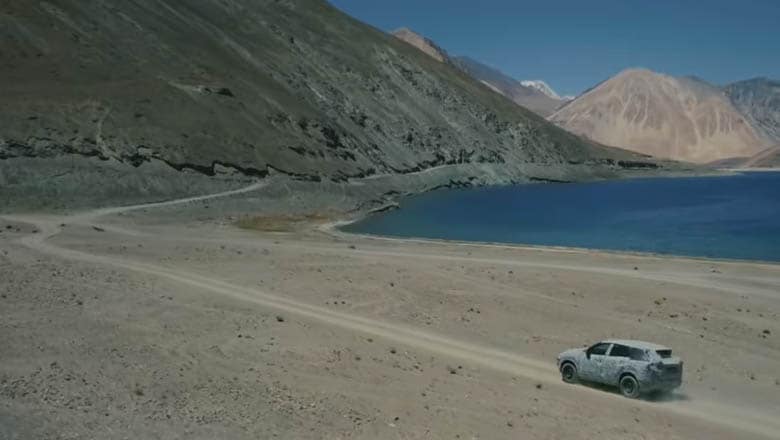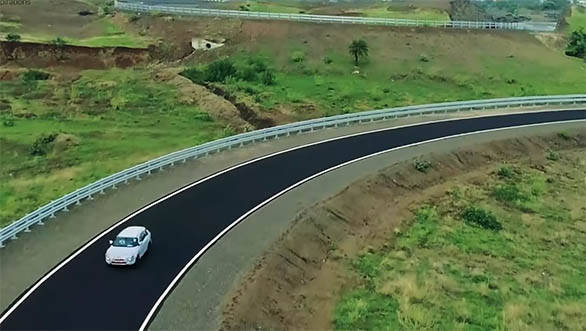Tata Harrier SUV to come with drive modes with terrain response system
Tata Motors is readying its flagship offering, the Harrier SUV for a launch in early 2019. The Indian automobile manufacturer had shown the concept at the 2018 Auto Expo it was revealed that the Harrier built under the H5X project name utilises the same platform as Jaguar Land Rover (JLR) Discovery Sport. Tata Motors calls this the Optimal Modular Efficient Global Advanced Architecture (Omega arc). While the architecture is the same as the JLR platform, the Tata Harrier has a different mix of materials for its platform. Tata Motors has now released a new video of the Harrier undergoing testing on different types of terrains. While the production-spec design is still under wraps, Tata Motors mentions that the SUV will come with drive modes that will be paired with the ESP terrain response system, something like what is offered in the Land Rover SUVs.
 The Tata Harrier SUV will be powered by a new engine called the 2.0-litre Kryotec that is derived from FCA's Multijet II motor seen on the Jeep
The Tata Harrier SUV will be powered by a new engine called the 2.0-litre Kryotec that is derived from FCA's Multijet II motor seen on the Jeep
The Tata Harrier SUV will be powered by a new engine called the 2.0-litre Kryotec that is derived from FCA's Multijet II motor seen on the Jeep Compass. This four-cylinder, turbo-charged motor is expected to produce around 140PS in the five-seater variant that is set to debut first, the seven-seater Harrier will likely make 170PS. The new motor will have an electronically controlled variable geometry turbocharger (eVGT) for better responses. The engine has also been adapted to run on varying drive modes via the terrain response system that the Harrier will come equipped with. The engine will be mated to a six-speed manual and a six-speed automatic.
We already know that this architecture is derived from Jaguar Land Rover's entry-level SUV platform, variations of which support cars like the Land Rover Discovery Sport, Jaguar E-Pace and the Range Rover Evoque. Tata's version, called Omega-Arc (Optimal Modular Efficient Global Advanced Architecture), will involve the use of cheaper materials and components to keep costs down.
The Harrier will have optimized torsional and bending stiffness which will give it better driving dynamics both on and off-road. Build quality and reliability are set to increase with the new highly automated assembly line while the SUV will also be very refined due to auxiliary isolation panels present alongside the engine's firewall. Further, the architecture will use high strength steel to improve strength.
 The engine has also been adapted to run on varying drive modes via the terrain response system that the Harrier will come equipped with. The engine will be mated to a six-speed manual and a six-speed automatic.
The engine has also been adapted to run on varying drive modes via the terrain response system that the Harrier will come equipped with. The engine will be mated to a six-speed manual and a six-speed automatic.
The production car, when launched in the first quarter of 2019, will compete with the likes of the Hyundai Creta and Jeep Compass. Tata had been in a rut until sometime back and is now turning things around with cars like the Tiago, Tigor and Nexon. While these successes have been in the sub-10 lakh end of the market, the new SUV will be the company's first serious contender in the mid-size crossover segment.
Starts Rs 13.69 Lakhs
1956cc
Automatic
170
350
-NA-
Starts Rs 9.99 Lakhs
1353cc
Automatic
115
242
-NA-
-NA-
1998cc
Automatic
300
400
-NA-
Starts Rs 17.79 Lakhs
1956cc
Automatic
163
350
14.9 Kmpl
Starts Rs 71.38 Lakhs
2995cc
Automatic
340
450
-NA-
Starts Rs 57.06 Lakhs
1999cc
Automatic
180
365
-NA-














